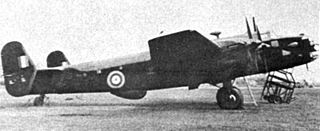 W
WV9977 was an Handley Page Halifax II that had been sent to the Telecommunications Research Establishment (TRE) at RAF Defford to be used as a flying testbed for the H2S radar.
 W
WRadar, Airborne Interception, Mark IV, or AI Mk. IV for short, was the world's first operational air-to-air radar system. Early Mk. III units appeared in July 1940 on converted Bristol Blenheim light bombers, while the definitive Mk. IV reached widespread availability on the Bristol Beaufighter heavy fighter by early 1941. On the Beaufighter, the Mk. IV arguably played a role in ending the Blitz, the Luftwaffe's night bombing campaign of late 1940 and early 1941.
 W
WRadar, Airborne Interception, Mark VIII, or AI Mk. VIII for short, was the first operational microwave-frequency air-to-air radar. It was used by Royal Air Force night fighters from late 1941 until the end of World War II. The basic concept, using a moving parabolic antenna to search for targets and track them accurately, remained in use by most airborne radars well into the 1980s.
 W
WAirborne Cigar, or ABC for short, was a World War II electronic countermeasure (ECM) system developed by the Telecommunications Research Establishment (TRE) to jam Luftwaffe ground-to-air radios operating in the very high frequency (VHF) band. When used properly, the system made enemy night fighter communications almost impossible. The Germans referred to ABC as "dudelsack", German for bagpipes, in reference to the warbling sound.
 W
WThe AMES Type 7, also known as the Final GCI, was a ground-based radar system introduced during World War II by the Royal Air Force (RAF). The Type 7 was the first truly modern radar used by the Allies, providing a 360 degree view of the airspace around the station out to a distance of about 90 miles (140 km). It allowed fighter interceptions to be plotted directly from the radar display, a concept known as ground controlled intercept, or GCI.
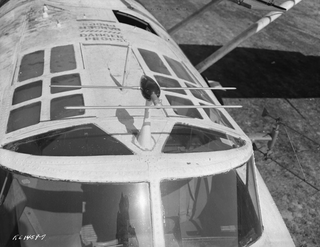 W
WRadar, Air-to-Surface Vessel, Mark II, or ASV Mk. II for short, was an airborne sea-surface search radar developed by the UK's Air Ministry immediately prior to the start of World War II. It was the first aircraft mounted radar of any sort to be used operationally. It was widely used by aircraft of the RAF Coastal Command, Fleet Air Arm and similar groups in the United States and Canada. A version was also developed for small ships, the Royal Navy's Type 286.
 W
WRadar, Air-to-Surface Vessel, Mark III, or ASV Mk. III for short, was a surface search radar system used by RAF Coastal Command during World War II. It was a slightly modified version of the H2S radar used by RAF Bomber Command, with minor changes to the antenna to make it more useful for the anti-submarine role. It was Coastal Command's primary radar from the spring of 1943 until the end of the war. Several improved versions were introduced, notably the ASV Mark VI, which replaced most Mk. IIIs from 1944 and ASV Mark VII radar, which saw only limited use until the post-war era.
 W
WThe Automatic Gun-Laying Turret (AGLT), also known as the Frazer-Nash FN121, was a radar-directed, rear gun turret fitted to some British bombers from 1944. AGLT incorporated both a low-power tail warning radar and fire-control system, which could detect approaching enemy fighters, aim and automatically trigger machine guns – in total darkness or cloud cover if necessary. The radar warning and fire-control system itself was commonly known by the code names Village Inn and "Z Equipment", as well as the serial number TR3548.
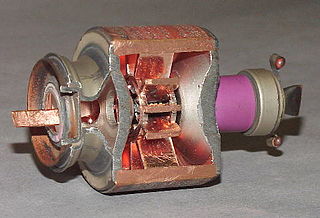 W
WThe cavity magnetron is a high-power vacuum tube that generates microwaves using the interaction of a stream of electrons with a magnetic field while moving past a series of cavity resonators which are small, open cavities in a metal block. Electrons pass by the cavities and cause microwaves to oscillate within, similar to the functioning of a whistle producing a tone when excited by an air stream blown past its opening. The resonant frequency of the arrangement is determined by the cavities' physical dimensions. Unlike other vacuum tubes, such as a klystron or a traveling-wave tube (TWT), the magnetron cannot function as an amplifier for increasing the intensity of an applied microwave signal; the magnetron serves solely as an oscillator, generating a microwave signal from direct current electricity supplied to the vacuum tube.
 W
WThe Central Research Laboratories, often referred to as CRL, was a British research laboratory that originally belonged to the EMI Corporation.
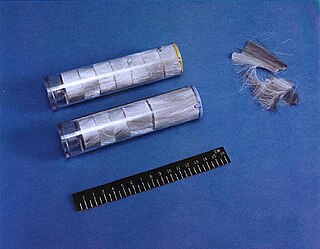 W
WChaff, originally called Window by the British and Düppel by the Second World War era German Luftwaffe, is a radar countermeasure in which aircraft or other targets spread a cloud of small, thin pieces of aluminium, metallized glass fibre or plastic, which either appears as a cluster of primary targets on radar screens or swamps the screen with multiple returns.
 W
WChain Home, or CH for short, was the codename for the ring of coastal Early Warning radar stations built by the Royal Air Force (RAF) before and during the Second World War to detect and track aircraft. Initially known as RDF, and given the official name Air Ministry Experimental Station Type 1 in 1940, the radar units themselves were also known as Chain Home for most of their life. Chain Home was the first early warning radar network in the world, and the first military radar system to reach operational status. Its effect on the outcome of the war made it one of the most powerful weapons of what is today known as the "Wizard War".
 W
WChain Home Low (CHL) was the name of a British early warning radar system operated by the RAF during World War II. The name refers to CHL's ability to detect aircraft flying at altitudes below the capabilities of the original Chain Home (CH) radars, where most CHL radars were co-located. CHL could reliably detect aircraft flying as low as 500 feet (150 m). The official name was AMES Type 2, referring to the Air Ministry Experimental Station at Bawdsey Manor where it was developed, but this name was almost never used in practice.
 W
WColossus was a set of computers developed by British codebreakers in the years 1943–1945 to help in the cryptanalysis of the Lorenz cipher. Colossus used thermionic valves to perform Boolean and counting operations. Colossus is thus regarded as the world's first programmable, electronic, digital computer, although it was programmed by switches and plugs and not by a stored program.
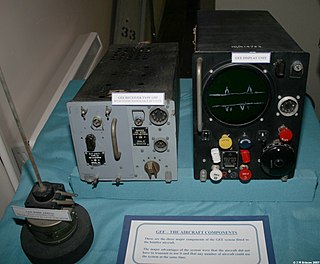 W
WGee, sometimes written GEE, was a radio navigation system used by the Royal Air Force during World War II. It measured the time delay between two radio signals to produce a fix, with accuracy on the order of a few hundred metres at ranges up to about 350 miles (560 km). It was the first hyperbolic navigation system to be used operationally, entering service with RAF Bomber Command in 1942.
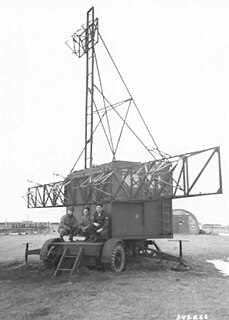 W
WRadar, Gun Laying, Mark I, or GL Mk. I for short, was an early radar system developed by the British Army to provide range information to associated anti-aircraft artillery. There were two upgrades to the same basic system, GL/EF and GL Mk. II, both of which added the ability to accurately determine bearing and elevation.
 W
WRadar, Gun Laying, Mark III, or GL Mk. III for short, was a radar system used by the British Army to directly guide, or lay, anti-aircraft artillery (AA). The GL Mk. III was not a single radar, but a family of related designs that saw constant improvement during and after World War II. These were renamed shortly after their introduction in late 1942, becoming the Radar, AA, No. 3, and often paired with an early warning radar, the AA No. 4, which was also produced in several models.
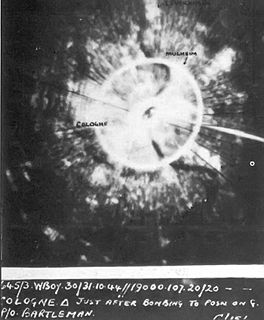 W
WH2S was the first airborne, ground scanning radar system. It was developed for the Royal Air Force's Bomber Command during World War II to identify targets on the ground for night and all-weather bombing. This allowed attacks outside the range of the various radio navigation aids like Gee or Oboe, which were limited to about 350 kilometres (220 mi). It was also widely used as a general navigation system, allowing landmarks to be identified at long range.
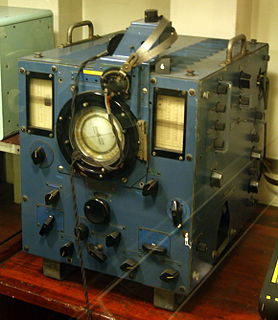 W
WHigh-frequency direction finding, usually known by its abbreviation HF/DF or nickname huff-duff, is a type of radio direction finder (RDF) introduced in World War II. High frequency (HF) refers to a radio band that can effectively communicate over long distances; for example, between U-boats and their land-based headquarters. HF/DF was primarily used to catch enemy radios while they transmitted, although it was also used to locate friendly aircraft as a navigation aid. The basic technique remains in use to this day as one of the fundamental disciplines of signals intelligence, although typically incorporated into a larger suite of radio systems and radars instead of being a stand-alone system.
 W
WIFF Mark II was the first operational identification friend or foe system. It was developed by the Royal Air Force just before the start of World War II. After a short run of prototype Mark Is, used experimentally in 1939, the Mark II began widespread deployment at the end of the Battle of Britain in late 1940. It remained in use until 1943, when it began to be replaced by the standardised IFF Mark III, which was used by all Allied aircraft until long after the war ended.
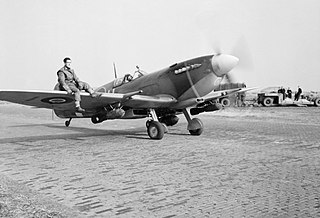 W
WIFF Mark III, also known as ARI.5025 in the UK or SCR.595 in the US, was the Allied Forces standard identification friend or foe (IFF) system from 1943 until well after the end of World War II. It was widely used by aircraft, ships, and submarines, as well as in various adaptations for secondary purposes like search and rescue. 500 units were also supplied to the Soviet Union during the war.
 W
WMonica was a range-only tail warning radar for bombers, introduced by the RAF in June 1942. Officially known as ARI 5664, it operated at frequencies of around 300 MHz. The system was also used by the US Army Air Forces, under the name AN/APS-13, and the nickname Archie.
 W
WOboe was a British aerial blind bombing system in World War II, based on radio transponder technology. The system consisted of a pair of radio transmitters on the ground, which sent signals which were received and retransmitted by a transponder in the aircraft. By comparing the time each signal took to reach the aircraft, the distance between the aircraft and the station could be determined. The Oboe operators then sent radio signals to the aircraft to bring them onto their target and properly time the release of their bombs.
 W
WThe Paraset was a small, low-power, thermionic valve, CW-only radio transmitter-receiver supplied to the resistance groups in France, Belgium and the Netherlands during World War II.
 W
WThe R1155 was a British communications receiver, commonly used in aircraft along with its associated T1154 transmitter. It was used extensively by the Royal Air Force during World War II, mainly in larger aircraft such as the Avro Lancaster, Handley Page Halifax, Vickers Wellington and Short Sunderland. Some were also used in vehicles and air-sea rescue launches.
 W
WThe S-Phone system was a UHF duplex radiotelephone system developed during World War II for use by Special Operations Executive agents working behind enemy lines to communicate with friendly aircraft and coordinate landings and the dropping of agents and supplies. The system was composed of a "Ground" transceiver, designed by Captain Bert Lane, and an "Air" transceiver designed by Major Hobday, both of the Royal Signals.
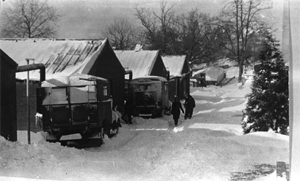 W
WThe Telecommunications Research Establishment (TRE) was the main United Kingdom research and development organization for radio navigation, radar, infra-red detection for heat seeking missiles, and related work for the Royal Air Force (RAF) during World War II and the years that followed. It was regarded as "the most brilliant and successful of the English wartime research establishments" under "Rowe, who saw more of the English scientific choices between 1935 and 1945 than any single man."
 W
WThe codename Tinsel referred to a type of equipment carried by RAF bombers and used for jamming Luftwaffe night-fighter controller's speech radio-frequencies during the Second World War.
 W
WThe Type 271 was a surface search radar used by the Royal Navy and allies during World War II. The first widely used naval microwave-frequency system, it was equipped with an antenna small enough to allow it to be mounted on small ships like corvettes and frigates, while its improved resolution over earlier radars allowed it to pick up a surfaced U-boat at around 3 miles (4.8 km) and its periscope alone at 900 yards (820 m).
 W
WThe Type 277 was a surface search and secondary aircraft early warning radar used by the Royal Navy and allies during World War II and the post-war era. It was a major update of the earlier Type 271 radar, offering much more power, better signal processing, new displays, and new antennas with greatly improved performance and much simpler mounting requirements. It allowed a radar with performance formerly found only on cruisers and battleships to be fitted even to the smallest corvettes. It began to replace the 271 in 1943 and was widespread by the end of the year.
 W
WThe Type 281 radar was a British naval early-warning radar developed during World War II. It replaced the Type 79 as the Royal Navy's main early-warning radar during the war.
 W
WThe Type 291 radar was designed as a search radar for ships destroyer-sized and smaller in 1942. By the end of the Second World War it had been installed in almost every British and Commonwealth destroyer and escort ship as well as many submarines, naval trawlers, and motor torpedo boats. Some sets were furnished to the Soviet Union for their destroyers as a part of Lend-Lease.
 W
WThe Type 293 radar was designed as a short-range aerial-search radar for surface ships in 1945. It used the same transmitter as the Type 277 surface-search radar, but used a new antenna design intended to cover the area above the ship to provide air warning instead of surface search. The stabilised "cheese" antenna, 6 feet (1.8 m) diameter in the AUR antenna, was upgraded to 8 feet (2.4 m) in Type 293P and to 12 feet (3.7 m) in the postwar Type 293Q.
 W
WThe Utility Radio or Wartime Civilian Receiver was a valve domestic radio receiver, manufactured in Great Britain during World War II starting in July 1944. It was designed by G.D. Reynolds of Murphy Radio. Both AC and battery-operated versions were made.
 W
WThe Wireless Set No. 18 was a HF portable man-pack radio transceiver used by the British Army during World War II. Frequency coverage was 6 to 9MHz with an RF output of 0.25W. Range was up to 10 miles.
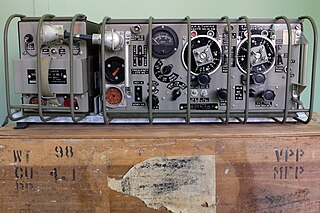 W
WThe Wireless Set No. 19 was a Second World War mobile radio transceiver designed for use by armoured troops of the British Army. First introduced in 1940, the No. 19 began to replace the pre-war Wireless Set No. 11. Two modified versions were introduced, Mk. II in 1941 and Mk. III in 1942. An improved version from Canada was introduced in 1942 for use primarily with other forces. In British service, the No. 19 was replaced in the post-war era by the Larkspur radio system. Canadian-built No. 19's saw continued service for many years with a variety of users.
 W
WThe Wireless Set No. 38 was a HF portable man-pack radio transceiver used by the British Army during World War II. Designed by Murphy Radio, it was a 5 valve set covering 7.4 to 9 MHz and powered by a large dry cell battery carried in a separate haversack. An AFV variant was also developed for use alongside the Wireless Set No. 19 in armoured vehicles to allow direct communication between tank commanders and infantry. In 1945, a Mk. III version was produced housed in a sealed diecast metal enclosure.
 W
WThe Wireless Set No. 62 was a British Army HF band radio transceiver. Introduced by Pye during the later part of World War II as a light-weight and waterproof replacement for the Wireless Set No. 22. Although intended as an interim design, it remained in production until 1966.
 W
WThe British Army's Wireless Set, Number 10, was the world's first microwave relay telephone system. It transmitted eight full-duplex (two-way) telephone channels between two stations limited only by the line-of-sight, often in the order of 25 to 50 miles. The stations were mounted in highly mobile trailers and were set up simply by aiming the two parabolic antennas on the roof at the next station.
 W
WThe Wireless Set Number 11, or WS No. 11, was a radio set designed for the British Army in 1938. It was designed to replace the 1933 Wireless Set No. 1 which had been found inadequate for a number of reasons. Like the No. 1, it was designed to be used in fixed locations like regimental field headquarters, as well as in vehicles and tanks.